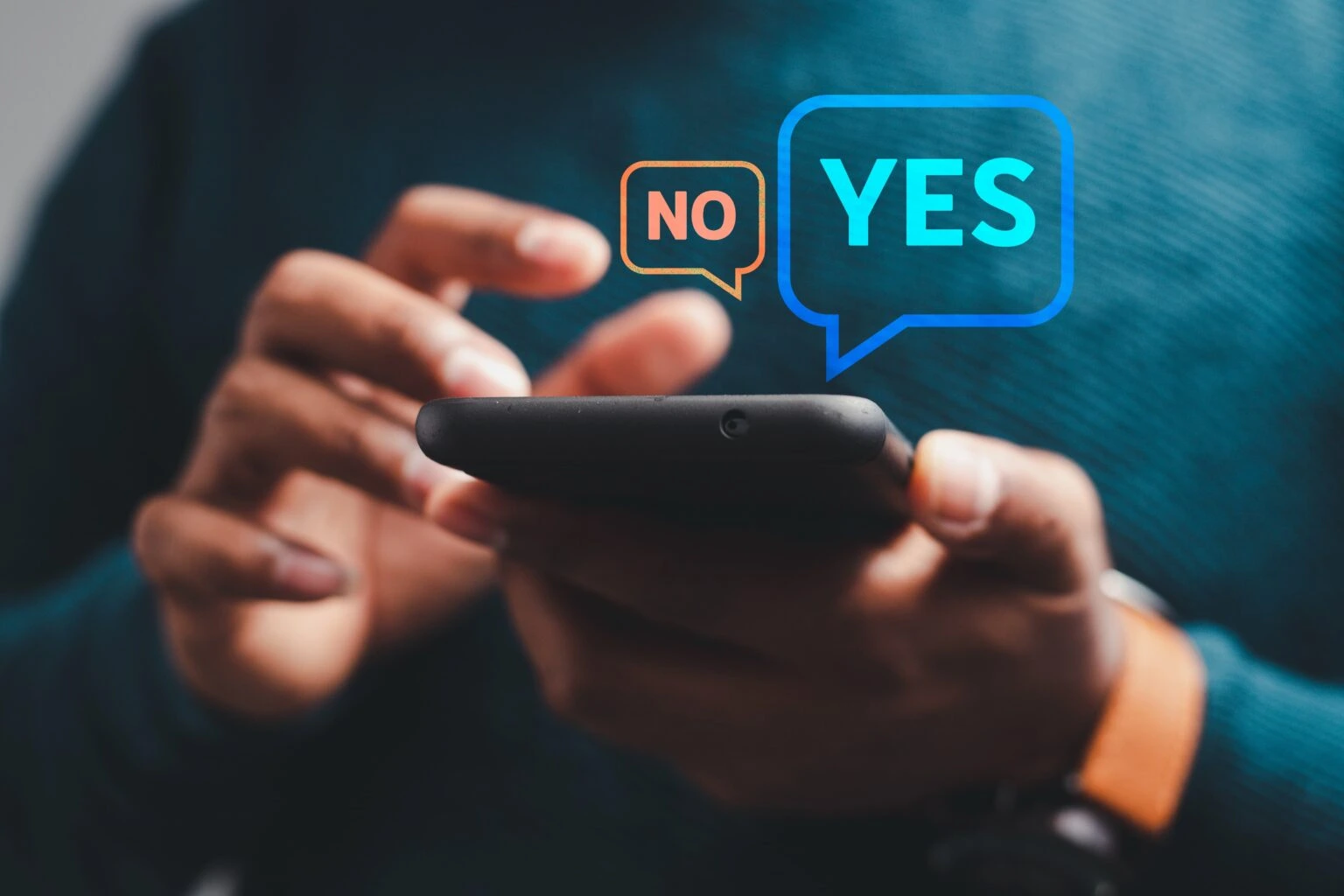SMS Compliance Basics: How A2P 10DLC Works
SMS compliance is key to unlocking the power of your campaigns. Learn how A2P 10DLC regulations can be a secret weapon or silent saboteur in your...
What is 10DLC? Understand 10DLC and its impact on business texting. Learn what it is, why it matters, and how you can adapt.

Most North Americans use ten-digit-long phone numbers. Also called local area numbers, they are the identifier for almost everyone texting and calling. A 10DLC number has a three-digit local area code, a three-digit prefix, and a four-digit line number. Almost everyone has their own 10DLC number.
While most people don’t use the term 10DLC to describe their numbers, it is used by A2P platforms, SMS-leveraging companies, and cell phone carriers to distinguish local numbers from toll-free and short codes.
In addition to 10DLC numbers, there are two other types of phone numbers: toll-free numbers and short codes. Both are well-suited for SMS marketing campaigns.
Short Code: These perfectly titled numbers are five or six digits long. They are dedicated to texting only. Unlike 10DLC numbers that only send one text message a minute, short codes can send hundreds of text messages every minute. They’re well-suited for enterprises and organizations conducting more substantial campaigns. Short codes are significantly more expensive than 10DLC numbers and take weeks to verify. Some companies even share short codes to cut costs.
Toll-Free: These numbers are designed to accept phone calls from customers as well as send and receive texts. Toll-free numbers have ten digits but are differentiated by their area code: 888, 800, 877, 855, 866, 844, or 833. They don’t cost callers money, which incentives them to call in. Toll-free numbers can send dozens of texts per second. Toll-free numbers cost less than short codes but take roughly the same amount of time to be verified – 4-6 weeks.
For many years, businesses weren’t authorized to use ten-digit phone numbers. Only short codes could be used to send text messages. The advent of messaging apps in 2008 attracted not just consumer attention but businesses as well. Many unauthorized companies started sending SMS messages, some of which were unwanted at best and spam at worst.
Application-to-person (A2P) SMS platforms were developed, allowing businesses to text bulk SMS messages. Some bad actors used these powerful texting platforms to send a plethora of harmful content. While the Cellular Telephone Industries Association (CTIA) addressed 10DLC best practices and guidelines, they did not acknowledge or authorize A2P platforms until 2017. Cell carriers started implementing and enforcing various measures and rules to get the spam out of SMS, protecting customers from spam and themselves from legal liability.
Cell carriers have since developed the infrastructure and regulations that allow for relatively spam-free A2P 10DLC communication, such as the creation of The Campaign Registry. The many rules surrounding 10DLC may be frustrating for newcomers, but they make SMS a better experience for everyone. Learn more about how A2P 10DLC compliance works.

Every business in North America that wants to start an SMS campaign using 10DLC must be verified with The Campaign Registry (TCR). This organization is a joint operation by cell carriers like T-Mobile, Verizon, and AT&T. It does an admirable job verifying and registering local numbers. In fact, the registration process only takes 3-5 days. TCR only works with 10DLC, not toll-free numbers or short codes.
However, TCR is only a small part of the entire A2P 10DLC process. It’s just one link in a chain. Step by step, here’s what happens.
This complex sequence of events is necessary for the health of the SMS ecosystem.

Any 10DLC number must comply with the many regulations and rules set by The Campaign Registry. A little preparation goes a long way when ensuring successful 10DLC registration. Here’s what the process involves and what A2P 10DLC users need to do.
People don’t want spam texts. This is the guiding philosophy of The Campaign Registry, wireless carriers, and other organizations that regulate A2P messaging. They enforce many rules to ensure text messaging is spam-free and wanted. Accurate opt-ins, straightforward language, and security measures guarantee that every SMS subscriber meant to subscribe.
Going forward, consider how you use SMS text messaging, what kind of texts you like to receive, and why you subscribe to get texts from some businesses.
Any brand using A2P 10DLC marketing must meet and maintain certain 10DLC requirements. 10DLC SMS campaigns must follow the following guidelines.
The requirements for 10DLC registration may seem daunting, but they can be surmounted with proper strategy.
Most A2P 10DLC platforms simply won’t allow text messaging without complete registration with The Campaign Registry. Businesses that circumvent the rules by sending messages directly or through unscrupulous A2P 10DLC platforms can find themselves fined or blocked.
Compliance is important, especially when regarding business messaging. Check out the full A2P 10DLC compliance guide to learn more.

It’s quite a feat to have developed the SMS ecosystem we have today, especially compared to email and phone calls. The high open rates, fast read times, and positive opinion that most people have of text messaging can be attributed to the widespread regulation and enforcement of opt-ins. For any 10DLC-compliant A2P messaging to take place, organizations must have opt-ins.
We have a more in-depth 10DLC opt-in guide, an opt-in strategy guide, and tips to ensure your 10DLC compliance guide is compliant, all well-suited for helping anyone start to create marketing messages. Still, we’ll briefly overview opt-ins because they’re essential for compliance.
Opt-ins are essentially recorded agreements by subscribers to receive text messages. They must possess a variety of qualities to be 10DLC compliant. Remember that these rules are meant to make texting healthier for everyone.
There is much more to opt-ins for specific industries like A2P SMS for e-commerce, but these rules are among the most basic. Learn more by reading our blog.

Elevate SMS with 10-digit long code business texting from Sakari. Our powerful A2P mass texting platform allows any organization to send SMS to subscribers while meeting the approval process.
From two-way messaging to MMS messaging everything is possible through our cost-effective, easy-to-use, and highly efficient texting service. We also provide a diverse array of educational material to ensure that every user can leverage the power of A2P messaging.
Want to learn more? Book a demo to be guided through our platform with an expert. Or check out these helpful tips to ensure your business is 10DLC compliant!
Businesses can use 10DLC numbers to send a variety of messages, including notifications, promotional texts, appointment reminders, and customer support inquiries. These messages adhere to A2P 10DLC regulations to ensure compliance and deliverability.
10DLC numbers are designed for higher throughput and reliable message delivery across mobile carriers. By registering through The Campaign Registry (TCR), businesses can reduce spam filters and improve deliverability.
The Campaign Registry (TCR) handles 10DLC vetting, ensuring businesses comply with industry standards and SMS regulations. It verifies campaigns, enabling businesses to use 10-digit long code numbers for A2P messaging.
Opt-in consent ensures that subscribers explicitly agree to receive SMS messages. This reduces non-compliance risks, improves trust scores, and aligns with regulations like the Telephone Consumer Protection Act (TCPA).
Yes, 10DLC is cost-effective for small businesses. It offers affordable pricing, seamless integrations with messaging services via API, and scalable options for high-volume campaigns.
While 10DLC supports two-way messaging with local area codes, toll-free numbers allow voice calls and higher messaging throughput. Short codes, on the other hand, are ideal for high-volume campaigns but are more expensive and time-intensive to provision.
Non-compliance, such as failing to obtain opt-ins or sending restricted content, can lead to fines and blocked messaging campaigns. Following industry standards ensures uninterrupted business communication.
10DLC offers better messaging throughput, enhanced deliverability, and compliance with carrier networks. It’s ideal for notifications, promotions, and other business communication use cases.
Messaging throughput refers to the rate at which text messages are sent. 10DLC numbers provide higher throughput compared to person-to-person messaging, making them suitable for A2P SMS campaigns.
Mobile carriers enforce 10DLC regulations to protect users from spam and ensure a healthy SMS ecosystem. They collaborate with TCR to vet campaigns and monitor message delivery performance.

Adam is the Co-Founder of Sakari. Sakari is a business SMS service for sending text message alerts, reminders, events and notifications to customers and employees, wherever they are. Manage your entire business messaging in one location, with unlimited users, branch accounts and integration with over 1,300 applications.
Your email address will not be published
SMS compliance is key to unlocking the power of your campaigns. Learn how A2P 10DLC regulations can be a secret weapon or silent saboteur in your...
Stay compliant with A2P 10DLC compliance regulations. Learn how to register your campaigns, increase deliverability, and use SMS marketing...
Ensure compliance with privacy laws for your 10DLC campaign with 4 key tips on crafting a comprehensive Privacy Policy. Learn how to protect consumer...
With our 14-day free trial, you can dive in and explore all these features, with no commitment.